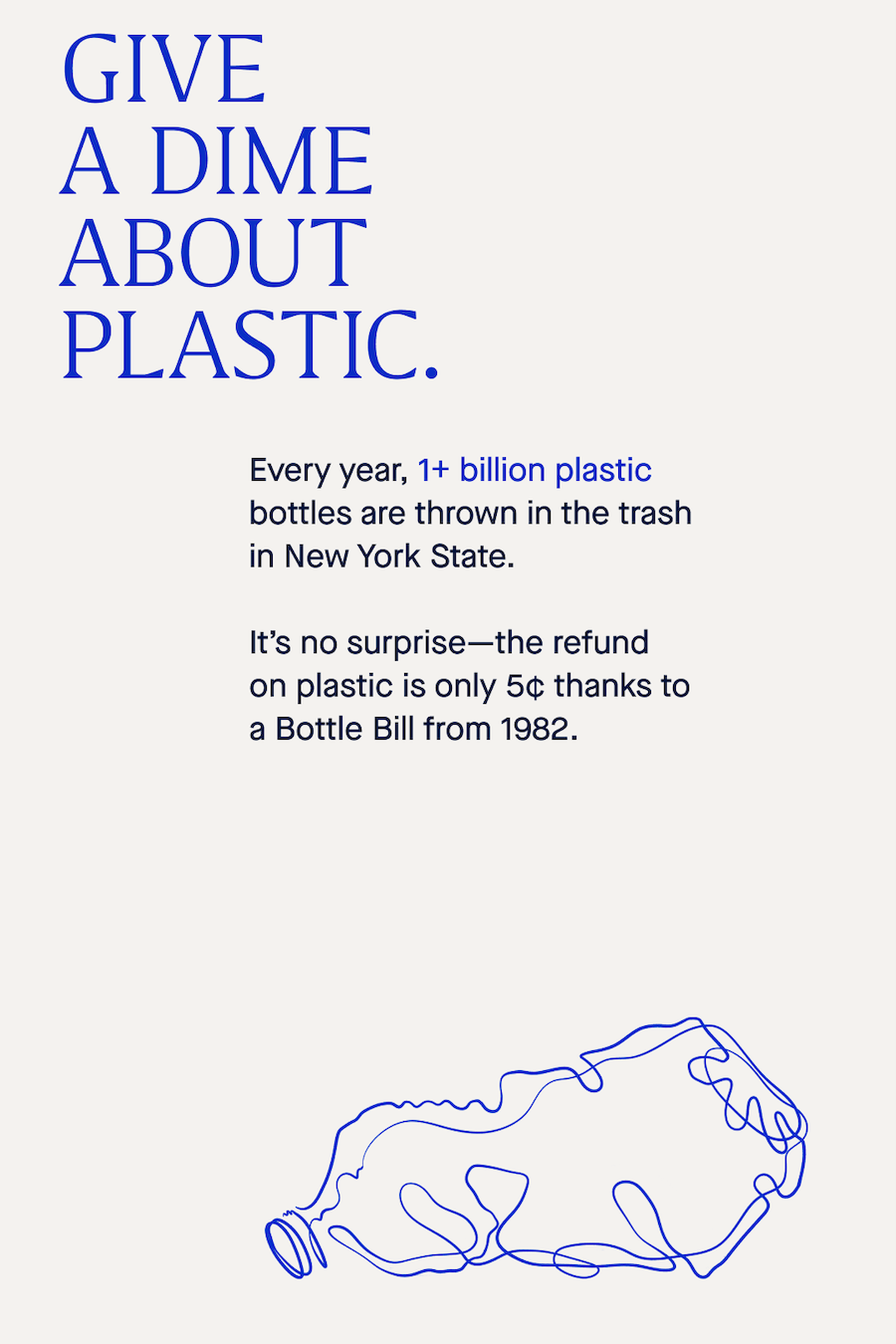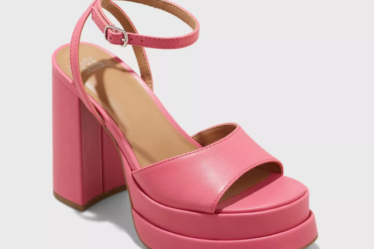
Rothy’s latest campaign isn’t about its recycled plastic ballet flats or brightly coloured tote bags. It’s a week-long marketing blitz aimed at galvanising support for a New York state recycling bill.
On Sunday, the footwear and accessories brand took out a full-page ad in The New York Times, throwing its weight behind efforts to improve recycling rates by updating the state’s 40-year-old bottle collecting scheme. This week, its social channels will feature posts on the “Bigger, Better Bottle Bill.” visitors to the company’s e-commerce site will find details on how they can get in touch with state legislators to voice their support, and the company’s Nolita store will multitask as a call centre.
The initiative is the first effort from Rothy’s new advocacy arm and a sign of the shifting relationship between fashion, politics and marketing.
The industry is already awash with social impact and eco-marketing claims, fuelled by a generation of consumers who want brands to take a stance on big issues. But brands’ splashy campaigns have often lacked follow through and jaded consumers increasingly expect more. That’s beginning to blur the lines between political advocacy and marketing as some businesses see an opportunity to demonstrate they not only stand for certain values, but are actively working to change the system in support of them.
To be sure, the fashion industry does plenty of lobbying behind the scenes on a variety of issues, mostly through trade groups such as the National Retail Federation in the US or Euratex in Europe. A handful of companies, like Patagonia and Beautycounter, have built advocacy into their brand. But it’s still quite unusual to see a fashion company throw its marketing clout behind a specific piece of legislation as Rothy’s has with the New York Bottle Bill. It may not be for long.
“Consumers want brands to connect to something deeper than just what they sell,” said Rothy’s chief marketing officer Jamie Gersch. “It’s not enough to talk about it and we wanted to make sure we were using our platforms to encourage others to participate with us.”
Moving the Needle
New York’s Bigger Better Bottle Bill aims to expand the state’s existing bottle collection programme to more types of containers and increase the payout for returns and handling. Advocates say it will reduce litter, improve recycling rates and support the marginalised community of canners who make a living gathering up and returning New York’s discarded bottles.
At the moment, deposits for bottle returns are set at just five cents, a number that hasn’t changed since the 1980s. Glass bottles (which often break in the trash and make it so that nothing discarded alongside them can be recycled) aren’t covered by New York’s current bottle bill. The proposed update would change that and increase deposit rates to 10 cents. Similar policy changes in other states have boosted redemption and recycling rates.
Rothy’s campaign comes weeks before the bill, which has widespread support from environmental and community organisations, is expected to go to vote. The brand’s hoping to raise awareness and support for the update with accessible, tongue-in-cheek messaging like “give a dime about plastic.”
“I think it will have a pretty big impact,” said Ryan Carson, environmental campaign coordinator at New York Public Interest Research Group, adding that the bill has the potential to be “transformative” in how New York handles waste.
Mixed Motives
For Rothy’s, which estimates it’s turned more than 159 million plastic bottles into shoes and bags, backing the bill was a no-brainer. But while the brand’s messaging in support of recycling is clear, it also touches on an increasingly contentious debate around how fashion brands should be talking about their use of repurposed plastic.
At issue is the fact that while plastic bottles can churn through a recycling system multiple times, once the PET they’re made from is transformed into polyester, it can’t be easily recycled again. And while there’s an abundance of disused plastic in the world, recycled PET is more limited and demand is growing rapidly thanks to a multitude of sustainability-focused corporate commitments to shift away from virgin plastic.
Apparel, unlike water bottles, also gets run through washing machines, where synthetic fibres leach microplastics into waterways. Proposed anti-greenwashing rules in Europe say fashion brands should be explicit about these trade-offs when promoting recycled polyester products.
Rothy’s shoes last a long time and do a better job of keeping plastic out of landfill than single-use water bottles, which still have short lifecycles even if they can be reconstituted multiple times, said Saskia van Gendt, Rothy’s head of sustainability.
The brand is also working on ways to close the loop on its shoes. It launched a take-back scheme in 2021 and rolled it out to all its stores last year. Returned products are taken apart so the polyester uppers can be recycled into new yarn. The insoles, midsoles and outsoles (made from foam, rubber or another kind of plastic) are ground down for use in carpet backing, insulation or athletic flooring. But the company has yet to really crack how to turn old shoes back into new ones, or introduce products containing “twice-recycled” yarn.
“We don’t have all the answers,” said Gersh. “[The bottle bill is] really promoting the idea that until plastic and single-use plastic goes away, how do we use it for good?”
A New Age of Advocacy
With more environmental and social impact regulation coming down the pipe, it’s likely to become more common to see brands taking big stands on environmental and social policy, particularly when their business interests, consumer values and policy efforts align, experts said.
For instance, resale site Vestiaire Collective has coupled a ban on ultra-fast fashion introduced last year with support for policies that would make brands responsible for their clothing waste (a bit like a bottle bill for fashion).
Companies interested in publicly wading into policy debates should keep in mind lessons from earlier waves of brand activism: authenticity and consistency are key, as is evidence of real commitment.
“You cannot fool the consumer,” said Vestiaire’s chief sustainability and inclusion officer Dounia Wone. ”If you want to embrace a cause, take action… [and] it cannot just be for commercial reasons or marketing.” Like Rothy’s sustainability chief, van Gendt, Wone has a background in government work.
For any company, there’s also a question over whether the policies it might be backing really address the issues it creates.
For the industry to stand a chance of meeting the tsunami of sustainability commitments made over the last few years, fashion brands should be advocating for policies that don’t simply put a sticking plaster over existing problems, but change the whole model, said Ken Pucker, a senior lecturer at the Tufts Fletcher School.
“Policy is the most effective lever to drive any kind of social or environmental progress,” said Pucker. But encouraging more recycling, for instance, is a “low-leverage solution, because the amount of crap we’re making, we’re not recommending changing that,” he said.
Rothy’s said it’s monitoring fashion-focused policy moves like the New York Fashion Act, but isn’t planning any further advocacy efforts at the moment.
“Consumers understand brands can’t get behind everything,” said Gersh. “This is a big effort for us … but there’s no way one brand can do it all.”
For more BoF sustainability coverage, sign up now for our Weekly Sustainability Briefing by Sarah Kent.



